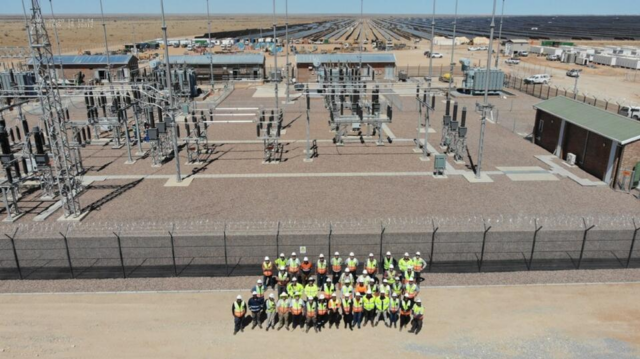South Africa is losing 30% of power produced by independent contractors due to “ridiculous procurement laws”, energy pundits have pointed out after Eskom on Friday signed up for a daily 150MW input from the Kenhardt 1-3 power project in the Northern Cape.
By Banele Ginindza
SOUTH Africa is losing 30% of power produced by independent contractors due to “ridiculous procurement laws”, energy pundits have pointed out after Eskom on Friday signed up for a daily 150MW input from the Kenhardt 1-3 power project in the Northern Cape.
This comes as Electricity Minister Kgosientsho Ramokgopa unveiled the Kenhardt solar and battery facility in the Northern Cape owned by Scatec.
Kenhardt comprises three projects (Kenhardt 1-3), and has a total combined installed capacity of 540MW of solar photovoltaic (PV) and 225MW of batteries, sporting a storage capacity of 1.14GWh.
The largest battery storage facility comprises one million solar panels and 456 units, each matching the size of a shipping container and weighing 30 tons, and the project’s size spans 879 hectares (more than 1,500 soccer fields), or 10km from north to south.
Energy expert Chris Yelland said that as much as the Kenhardt capacity was impressive, the country still had to address the curtailment laws which made the taxpayer spend on power that could not be consumed.
“The Kenhardt project is the first of the so-called risk-mitigation initiatives the minister of mineral resources and energy (Gwede Mantashe) unveiled in the last two years. The gas-to-power projects have completely failed, including the Karpowership supply,” Yelland said.
“This is a huge milestone indicating what can be done in the shortest time possible.”
Curtailment is the controlled reduction of the output of renewable energy plants as the system operator’s response to transmission capacity constraints.
Eskom says this provides developers with an alternative if they are still keen to connect in the constrained grid areas.
Yelland also said that battery storage, as a developing strategy, was the most reliable source of power in the shortest time.
“There is a high level of wastage due to the specifications for independent power producers. Eskom only takes the power that it has contracted,” Yelland said.
Scatec CEO Terje Pilskog said the Kenhardt project was one of the largest hybrid projects globally, which was a feat to achieve in the scheduled 18 months of construction.
Pilskog said Kenhardt had 540MW solar capacity, 225MW of batteries, and 1.1GWh of storage capacity.
The project had a total capital expenditure of about R19 billion, and employed 2,500 people during its construction phase.
“We are committed to continue to deliver dispatchable renewable energy to Eskom for the next 25 years. For Scatec, South Africa continues to be a core market,” Pilskog said.
“We have big ambitions in the country. It is our largest market and we aspire to continue to grow our presence here further.”
Scatec was successful in the first round of Renewable Independent Power Producer Programme, and the first company to bring a utility-scale project into operation with its 75MW Kalkbult project, also in the Northern Cape, in 2013.
“Since then, we have developed and built about 1GW of solar projects in South Africa,” Pilskog said.
“This is home to our technical and operational competency centres, tracking our plants worldwide. And South Africa is indeed where the story of what Scatec is today started.”
– BUSINESS REPORT








